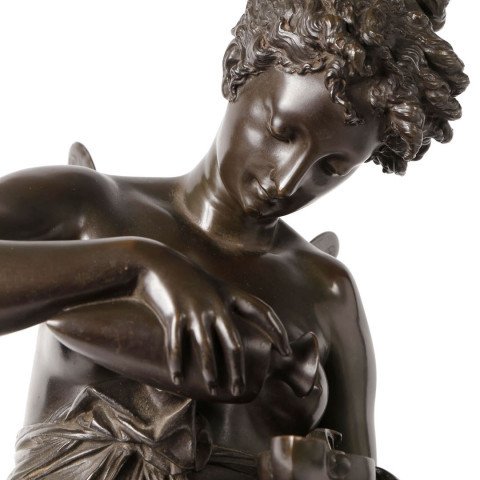Albert-Ernst Carrier-Belleuse was a 19th Century French sculptor. Born in 1824, Carrier-Belleuse began his training as a goldsmith’s apprentice, going on to study under David d’Angers and studying for a short time at the École des Beaux-Arts.
Carrier-Belleuse’s most famous terra cotta is The Abduction of Hippodameia, depicting the mythological scene of a centaur kidnapping Hippodameia on her wedding day. He went on to become one of the founding members of the Société Nationale des Beaux-Arts in 1862, being made an officer of the Légion d’honneur. In 1876, he became artistic director at the Manufacture national de Sévres.
His career is esteemed by both his versatility and for working outside of France. Auguste Rodin worked as Carrier-Belleuse’s assistant between 1864 and 1870, the two travelling to Brussels together in 1871, some accounting that Rodin assisted Carrier-Belleuse’s architectural sculpture for the Brussels Stock Exchange.
His work dealt in all manner of subjects and materials – his naturalism incorporating many styles: unembellished Realism, neo-Baroque exuberance and Rococco elegance.
One of the most important and innovative sculptors of 19th century, his works had a lasting influence on many of his contemporaries. Carrier-Belleuse died in Sévres in 1887.

